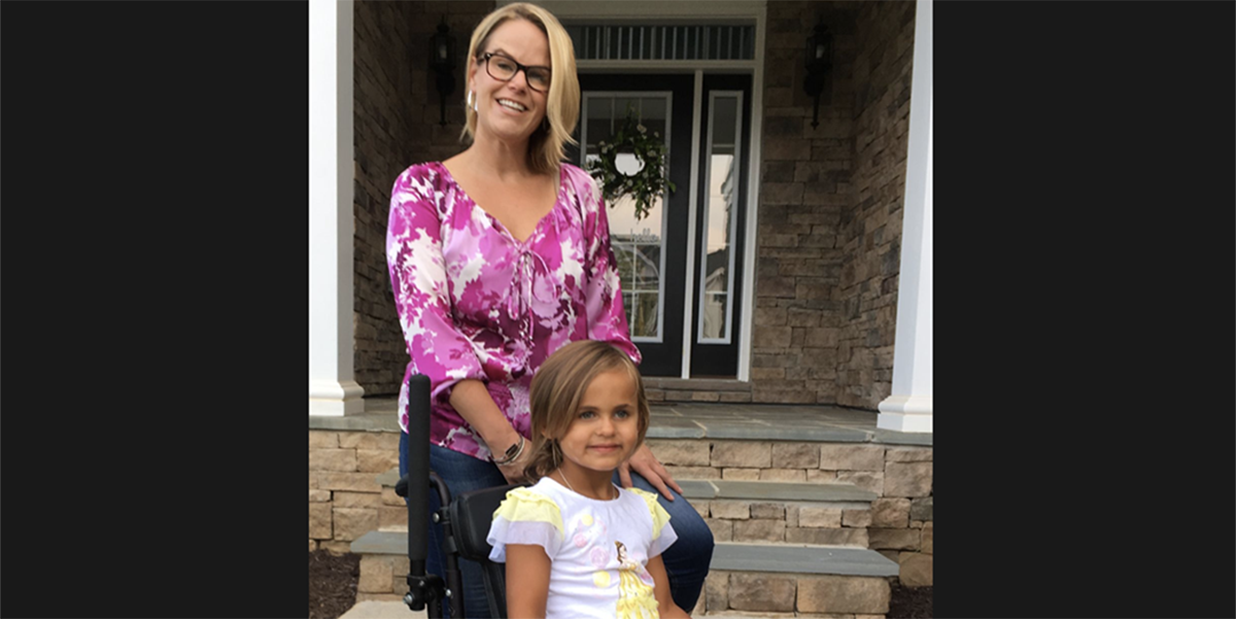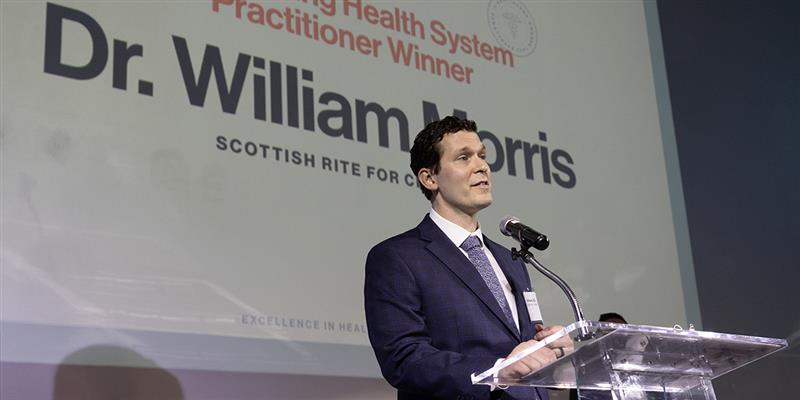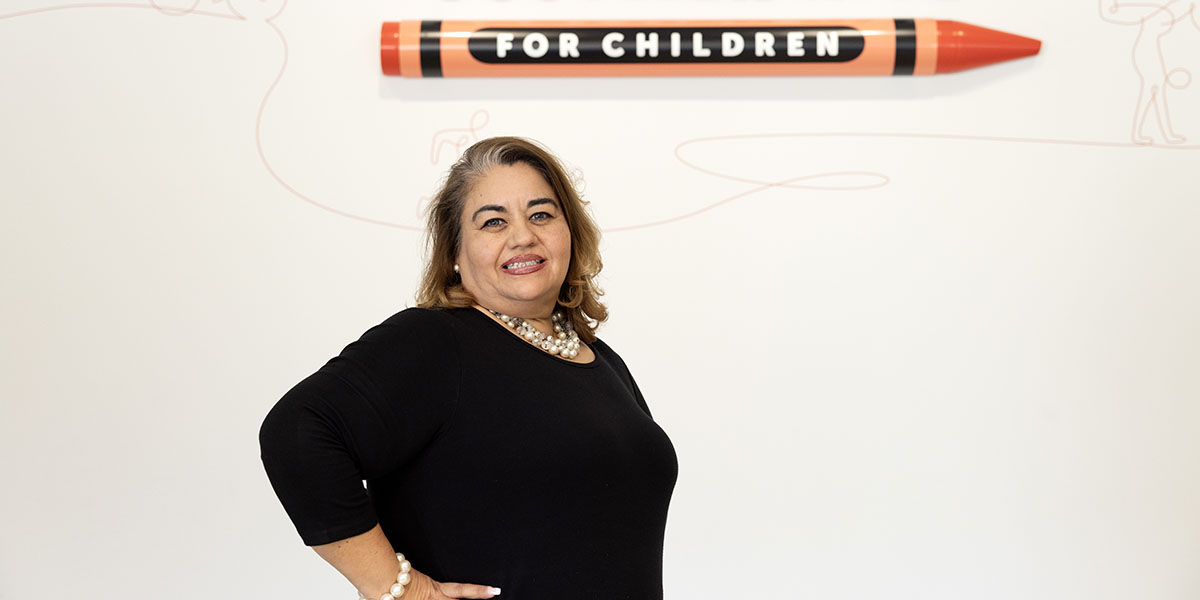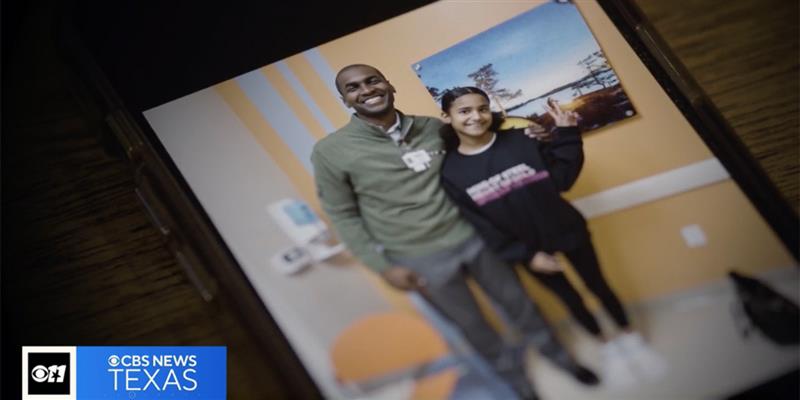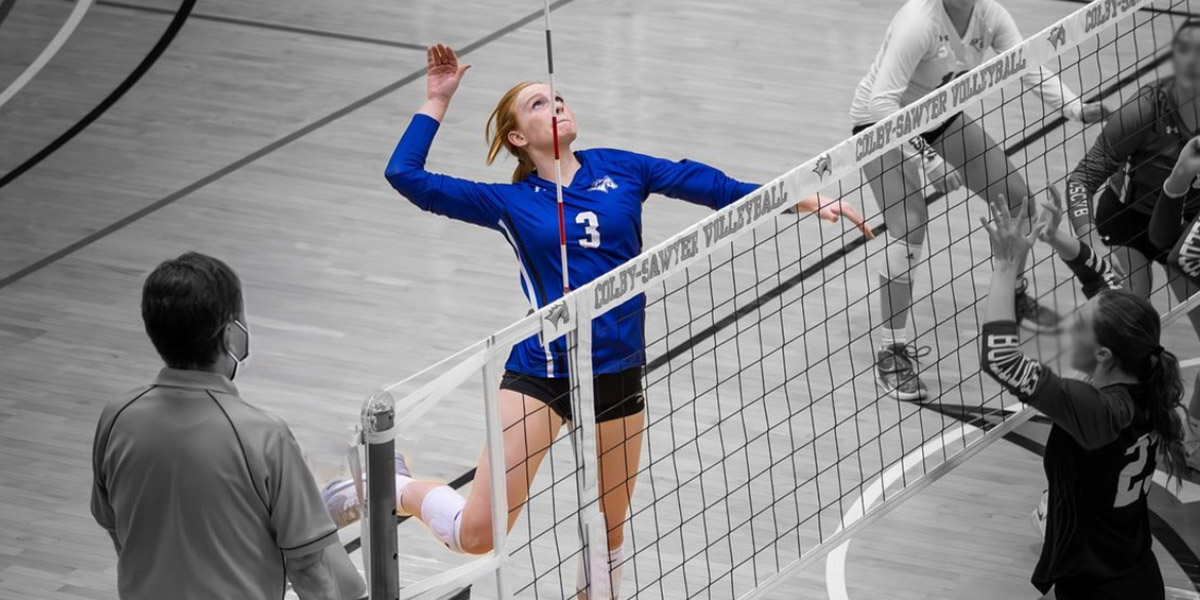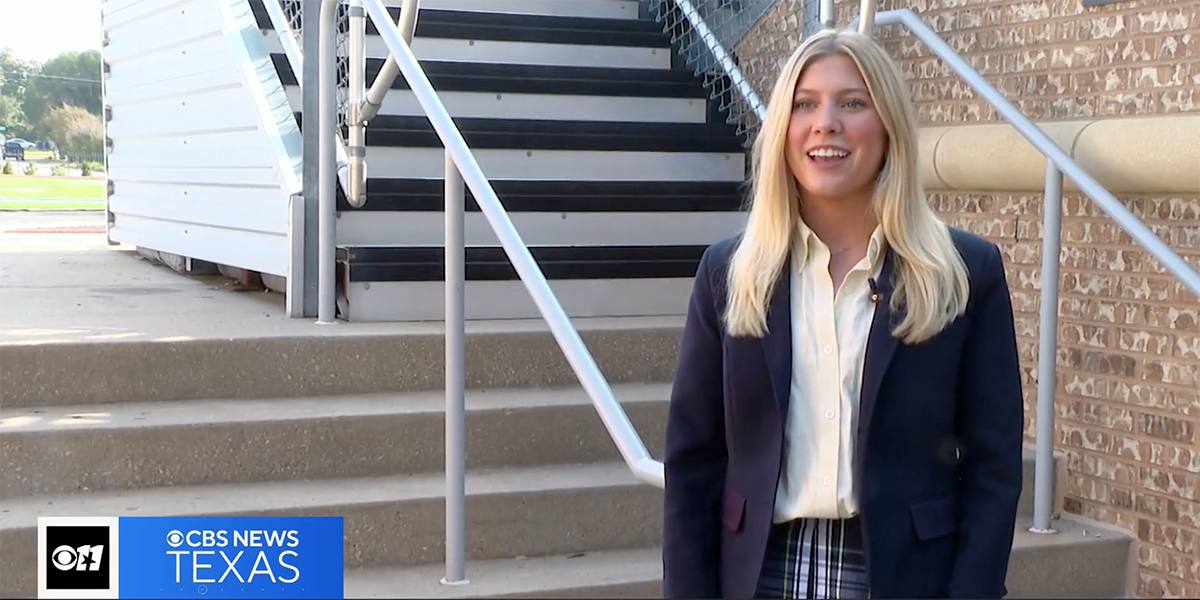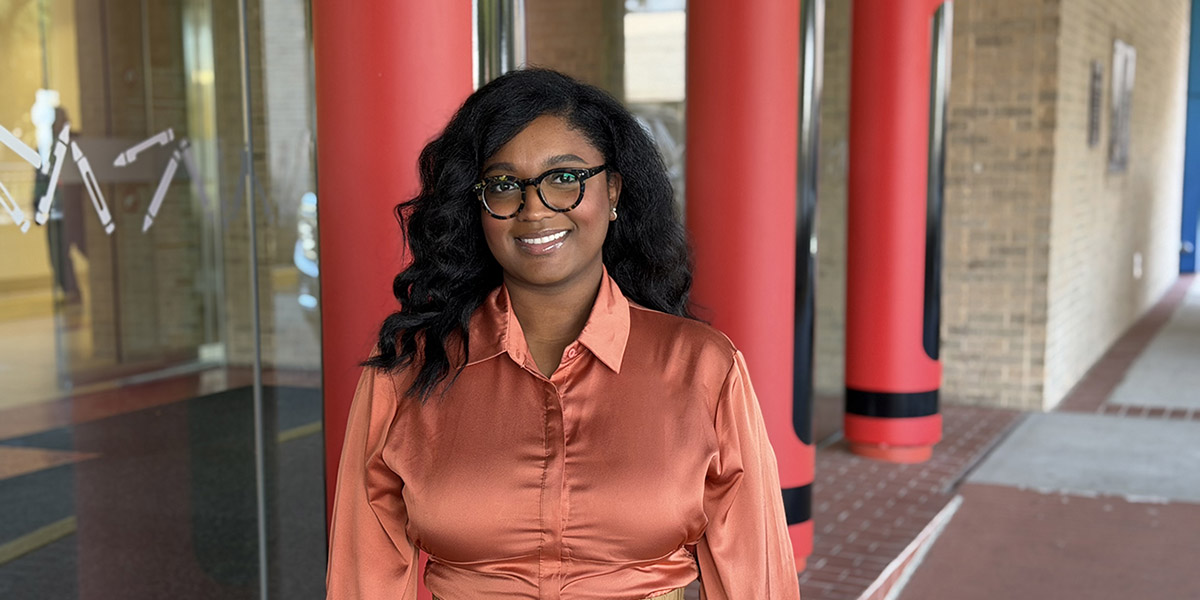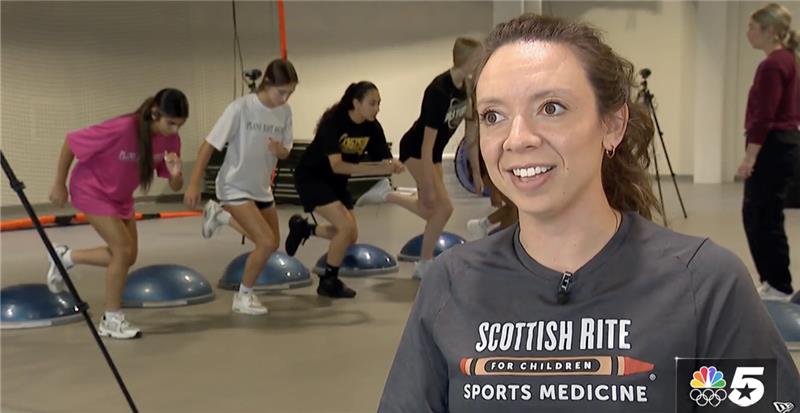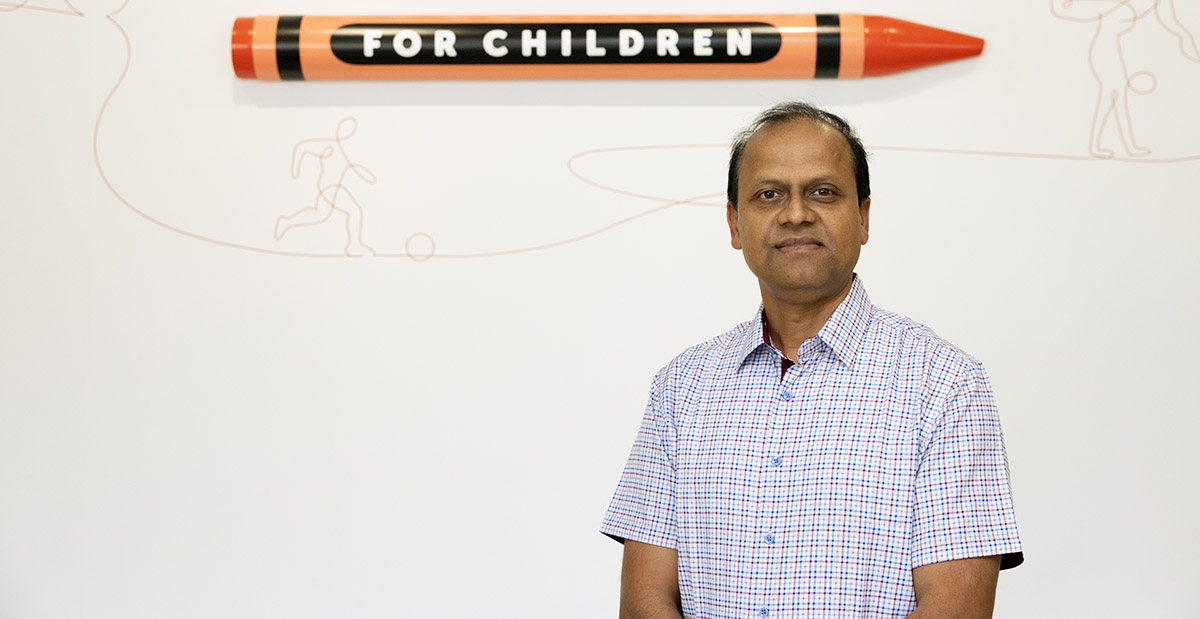It was Halloween 2016. Colleen and Drew Rathgeber were taking their three children on a neighborhood candy walk. After “tricking” out five houses, their middle child, Kaelan, complained of an aching left leg and had to return home.
What should have been a fun evening for the young lass turned into an alarming ordeal for her parents. Within a few months, the girl would be diagnosed with a rare hip disorder known as Legg Calve Perthes.
Named after three surgeons who discovered the disorder, it is commonly known as Perthes and primarily strikes children. When it affects adults, it’s vascular necrosis.
To envision its impact on a youngster’s life, think of any adult who suffers from a degenerative hip disease.
Debilitating. Painful. And a loss of lifestyle for those afflicted. But snatching joy from a youngster’s life is particularly difficult to dealwith, especially if they become wheelchair-bound.
“It was rare for a 3-year-old not be able to go further than a few nearby houses on Halloween. We took her to the doctor who diagnosed the problem as a virus affecting her joints,” said Colleen Rathgeber. “They said it would clear up in two weeks.”
Indeed, the problem faded until the Christmas holidays a few months later. Kaelan began limping again and displaying considerable pain with everyday movements.
While attending a neighborhood Super Bowl party in February 2017, one of their friends pointed out the child’s limp appeared to be more pronounced than ever.
After extensive blood tests by their pediatrician and X-rays from an orthopedic surgeon, the parents were assured their daughter was fine and would shake the limp over time.
Yet one month later, Kaelan was sent home by her gymnastics teacher because of the painful leg.
“When she walked into the house her leg looked like it was detached from her body. She was dragging it behind her,” Colleen Rathgeber said. “It was scary and traumatizing and we immediately took her to the pediatrician again.”
“After a full examination, the doctor said it was either cancer or a rare bone disease that he had not seen in his 24 years of practice. He tended to rule out cancer since her white blood count was normal,” said Rathgeber.
The parents scheduled an appointment with a specialist at Children’s Hospital in Fairfax. “The doctor walked in with the original film in his hand and said, ‘It’s right there on the X-ray.’” She had Perthes.
Birth of foundation
Roughly five in 100,000 have Perthes, which most often strikeschildren between the ages of 4 and 8. It is more common in boys. It evolves slowly as the blood supply to the affected hip is interrupted causing the femoral head, or hip ball, to ultimately fragment away.
If the hip receives constant high impact during the youthful stage it can alter its shape and lead to ongoing pain in adults.
Rathgeber began to research the disease in an effort to have Kaelan enrolled in a study group. Her singular most important contact was Dr. Harry Kim with the Scottish Rite Hospital for Children in Dallas, Texas. Kim specialized in the disease and had formed a study group targeted at 6- to 8-year-olds.
“The doctor said he had been working with Perthes for 25 years and couldn’t understand why there was no foundation to support research and awareness of the condition,” Rathgeber said.
“The more I thought about that, the more I could not shake the idea there was no single point of reference for parents seeking to better understand the disease and help treat their children.”
The working mom and mother of three — sons Kade, 8, and Bode, 3, round out the family –seemingly had little time to build and launch such a foundation. But never underestimate the power of a mother’s love.
With the decision to move forward, Rathgeber applied for a 501(c)(3) nonprofit status. She was required to form a board of directors and asked a friend, Shelley Crawford, who was studying for her physician assistant’s degree and Kim to serve on the board with her. They agreed. The Legg Calve Perthes Foundation was born.
Her motivation to act accelerated when Kaelan was subsequently diagnosed as suffering from Perthes in both hips. The child is not wheelchair-bound but does require the use of one on long day trips or whenever her hip pain dictates.
Kim also pointed out there was no event that enabled parents to meet annually and discuss their children’s conditions and receive updates on research.
So Rathgeber planned and hosted, in concert with Kim, the first annual Perthes conference, which was held in Dallas in October 2017. The daylong event was attended by 25 parents from across the country with 15 surgeons and 10 hospital employees presenting insights into the disease and its research.
“The parents felt they got more out of attending that conference than they had ever learned from their doctor or online. The disease affects the entire family, and it was amazing to see these parents sharing their stories and crying together.
“They were all feeling similar pain, isolation and sadness because Perthes robs their child of their childhood. Restrictions include no running or jumping, and it’s really hard to stop young kids from such activities,” said Rathgeber.
The positive news is 70 percent of cases resolve themselves by the age of 10 when the femoral cap recovers its blood supply and regrows the hip ball.
“But that requires parents to restrict their children’s activities. If the hip ball is constantly pounded, it will flatten the head and require surgery, which is very painful.”
Awareness and fundraising
Bringing her extensive business experience to bear, Rathgeber, who holds an MBA, sponsored a Perthes awareness event at a Washington Nationals ballgame in June. She, board members Crawford, and Dr. Benjamin Martin were recognized on the ballfield for their work.
Locally, the City of Haymarket issued a town proclamation in support of her foundation in June of this year and lit the town hall in blue lights in recognition of all those who suffer from the disease.
The foundation has also been accepted into the National Organization of Rare Disorders. Acceptance resulted in two additional members joining the board, Drs. Wudbhav “Woody” N. Sankar and Jennifer Lane.
Additionally, an honorary member of the board is actor and TV host Cameron Mathison who had Perthes as a child.
Sankar believes the foundation provides a valuable role because of the limited information available on the disease.
“The Perthes Foundation helps plug these gaps by providing invaluable support and networking opportunities. It has been amazing what Colleen has accomplished. She and the foundation have made a real difference in the lives of patients,” said Sankar.
On Oct. 20, the Second Annual Perthes Family Conference will be held in Dallas, Texas. The full-day event will showcase topics that matter most to families as they navigate through the Perthes lifecycle. As with the first conference, nationally known Perthes physicians will be in attendance to answer questions posed directly to the experts.
All of these activities require a budget, and Rathgeber encourages anyone interested in her efforts to visit the foundation’s website and donate.
“There’s a lot of components to Perthes including the impact on the family. We’re really excited to continue to grow. Our efforts to address these issues have been personally rewarding for all of us involved in the effort.”
For more information on Legg Calve Perthes disease, its mission, educational efforts, research and donations visit https://perthes.org


